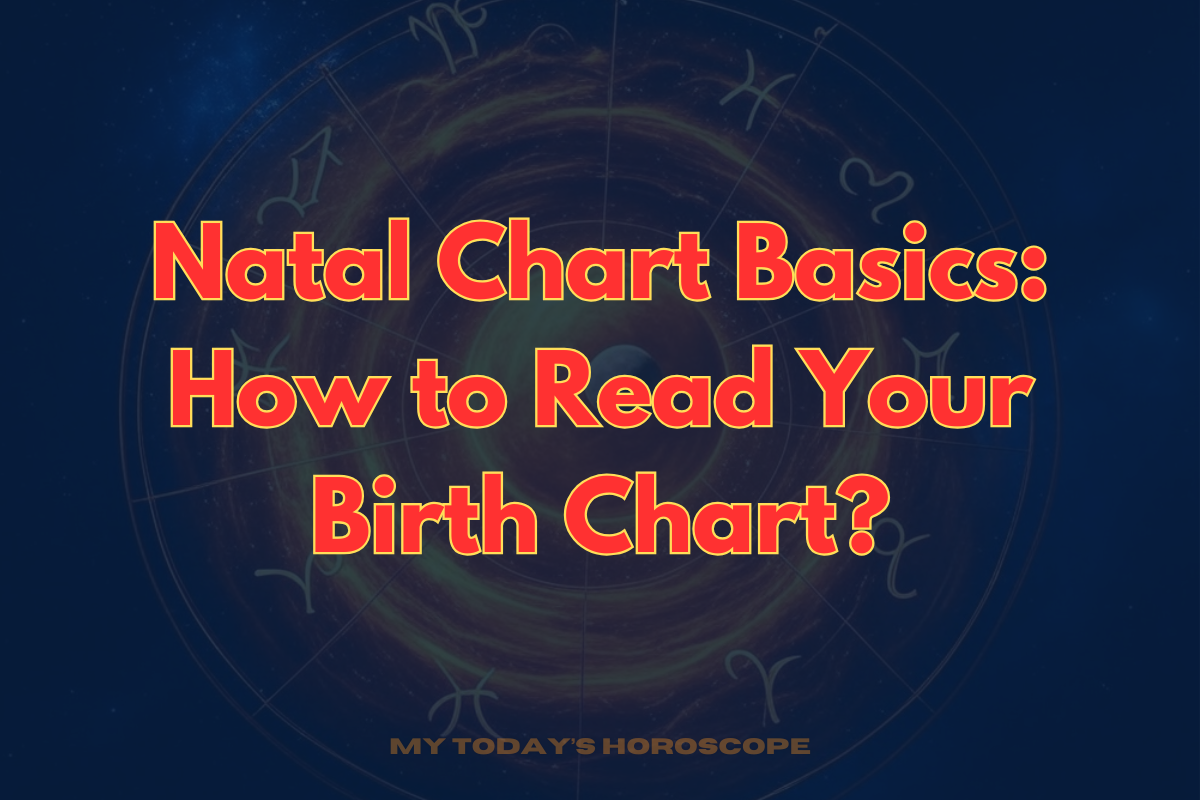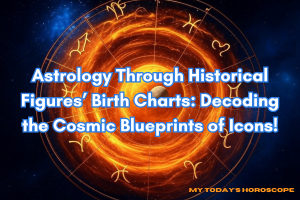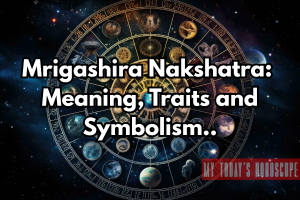Welcome to the enchanting realm of astrology, where the stars and planets weave a tapestry that reflects your unique essence. If you’ve ever looked up at the night sky and felt a pull—a quiet wonder about what it all means—you’re about to embark on a journey that’s as personal as it is profound. Today, we’re diving into the heart of the natal chart, a celestial snapshot taken at the precise moment of your birth. This map, often called your birth chart, is your cosmic fingerprint, revealing the intricate layers of your personality, your strengths, your challenges, and the paths you might walk in this lifetime.
I’ve been an astrologer for over two decades, guiding countless souls through the mysteries of their charts, and I can tell you this: there’s nothing quite like the moment when someone sees themselves reflected in the stars for the first time. It’s a spark of recognition, a quiet “aha” that shifts how you move through the world. Whether you’re a curious beginner or someone with a bit of astrological know-how, this guide is here to help you unlock the secrets of your natal chart. We’ll explore the planets, signs, houses, and aspects that form this cosmic puzzle, and I’ll share practical wisdom to help you read your chart with confidence and heart.
Before we dive in, let me set one thing straight: astrology isn’t about locking you into a predetermined fate. Your natal chart isn’t a script—it’s a mirror, a tool for self-awareness that shows you the energies you were born with and the possibilities they hold. You’re the one holding the pen, writing your story. So, grab your chart (you can generate one for free online if you don’t have it yet), settle in with a cup of tea or whatever soothes your soul, and let’s begin this journey together.
What Is a Natal Chart?
Picture this: the moment you took your first breath, the universe paused to take a photograph of the sky. That’s your natal chart—a two-dimensional map of the three-dimensional heavens, frozen in time based on your exact birth date, time, and place. It’s a wheel divided into 12 sections called houses, each representing a different slice of life, with the planets positioned around it in specific zodiac signs. The angles between these planets, known as aspects, add depth and dialogue to the story.
Your natal chart is more than just a pretty picture—it’s a living, breathing reflection of the energies that surrounded you at your birth. These energies don’t control you, but they do influence how you think, feel, and show up in the world. Over the years, I’ve watched people light up as they connect the dots between their chart and their lives—suddenly, the quirks they’ve always had or the dreams they can’t shake make sense. It’s a tool for understanding, a way to see yourself through the lens of the cosmos.
The Key Components of Your Natal Chart
To read your natal chart, you need to know its four main ingredients: planets, signs, houses, and aspects. Think of them as the cast, costumes, stages, and conversations of your cosmic play. Let’s break them down.
Planets: The Actors Bringing Your Story to Life
The planets are the heartbeat of your chart, each one carrying a unique energy that shapes a part of who you are. In astrology, we work with 10 major players (including the Sun and Moon, which we call “luminaries” because they light up our inner world). Here’s a quick rundown:
- Sun: Your core self, your essence, the flame of your identity. It’s who you’re growing into over time.
- Moon: Your emotional undercurrent, your instincts, the quiet needs that hum beneath the surface.
- Mercury: Your mind, your voice, how you think and share your thoughts.
- Venus: Your love language, your sense of beauty, what you value most deeply.
- Mars: Your drive, your passion, the way you chase what you want.
- Jupiter: Your sense of expansion, luck, where you seek meaning and adventure.
- Saturn: Your teacher, your structure, the lessons that shape your resilience.
- Uranus: Your spark of rebellion, your originality, where you break free.
- Neptune: Your dreams, your intuition, the misty realms of your spirit.
- Pluto: Your power, your transformation, the phoenix-like ability to rise from the ashes.
Each planet’s placement—in a sign and a house—tells you how and where its energy shows up in your life. A Sun in Sagittarius might make you a free-spirited seeker, while a Moon in Scorpio could mean you feel everything deeply, with an intensity that’s both a gift and a challenge.
Signs: The Flavors of the Planets’ Energies
The 12 zodiac signs are the styles or flavors that color the planets’ expressions. They’re like the costumes the planets wear, shaping how their energies come through. Here’s a glimpse at each:
- Aries: Fiery, bold, ready to charge into the unknown.
- Taurus: Grounded, sensual, a lover of life’s simple pleasures.
- Gemini: Quick, curious, always juggling a thousand ideas.
- Cancer: Soft, nurturing, guided by the tides of emotion.
- Leo: Warm, radiant, born to shine and inspire.
- Virgo: Precise, thoughtful, a master of the details.
- Libra: Balanced, charming, seeking harmony in all things.
- Scorpio: Deep, magnetic, unafraid of the shadows.
- Sagittarius: Wild, philosophical, chasing the horizon.
- Capricorn: Steady, ambitious, built for the long haul.
- Aquarius: Visionary, quirky, here to shake things up.
- Pisces: Gentle, dreamy, a soul that swims in the infinite.
The sign a planet occupies shows how it behaves. Take Venus, for example: in Libra, she’s a diplomat weaving peace in relationships; in Aries, she’s a fiery romantic who loves the thrill of the chase.
Houses: The Stages Where Life Unfolds
The 12 houses are the arenas of your life, the places where the planets act out their roles. Each house governs a specific domain, like chapters in your story:
- 1st House: You—your body, your vibe, how the world sees you.
- 2nd House: Your money, your values, what you hold dear.
- 3rd House: Your words, your siblings, the buzz of daily life.
- 4th House: Your roots, your home, the foundation you stand on.
- 5th House: Your joy, your creativity, the spark of romance.
- 6th House: Your work, your wellness, the rhythm of routine.
- 7th House: Your partnerships, your mirrors, the dance of “we.”
- 8th House: Your depths, your transformations, the mysteries you share.
- 9th House: Your quests, your beliefs, the call of the faraway.
- 10th House: Your legacy, your career, the mark you leave behind.
- 11th House: Your tribe, your dreams, the future you envision.
- 12th House: Your inner world, your spirit, the unseen currents.
The house a planet sits in shows where its energy plays out. Jupiter in the 9th house might mean a life filled with travel and learning, while Saturn in the 6th could point to a strong work ethic shaped by discipline.
Aspects: The Dialogues Between Planets
Aspects are the angles between planets, the conversations they’re having across the chart. They tell you how these energies blend, clash, or flow together. Here are the big ones:
- Conjunction (0°): Planets sit close, their energies merging into a potent mix—like a duet singing in unison.
- Sextile (60°): A friendly nudge, an opportunity waiting to be seized.
- Square (90°): A tension point, a challenge that pushes you to grow.
- Trine (120°): A natural harmony, a gift that flows effortlessly.
- Opposition (180°): A tug-of-war, a balance to strike between opposites.
Aspects weave your chart into a living story. A Moon trine Venus might mean your emotions and relationships hum in sweet harmony, while a Mars square Uranus could spark sudden bursts of action—or impatience.
How to Read Your Natal Chart: A Step-by-Step Guide
Ready to dive into your chart? It might look like a jumble of symbols at first, but trust me—it’s a language you can learn, one piece at a time. Here’s how to start decoding it, step by step. Don’t rush; this is a slow dance with the stars.
Step 1: Find Your Ascendant (Rising Sign)
Your Ascendant, or Rising Sign, is the zodiac sign that was climbing the eastern horizon when you were born. It’s the cusp of your 1st house and the lens through which your whole chart unfolds. This sign shapes your outer self—how you approach the world and how others first see you.
- How to Spot It: Look at the left side of your chart wheel, where the 1st house begins. The sign there is your Rising Sign.
- What It Tells You: A Pisces Rising might give you a gentle, ethereal presence, while a Capricorn Rising could make you seem steady and serious, even if you’re a wild card inside.
The Ascendant also sets the house cusps, so an accurate birth time is key. Without it, your chart’s still rich, but the houses might be a guess.
Step 2: Locate Your Sun and Moon
The Sun and Moon are the twin pillars of your chart, lighting up your core and your soul. Together with your Rising Sign, they’re often called the “Big Three” because they’re the foundation of your personality.
- Sun Sign: Your essence, your vitality, the “you” you’re becoming. It’s the sign you likely know from horoscopes.
- Example: A Virgo Sun might mean you thrive on order and service, with a quiet strength in precision.
- Moon Sign: Your inner landscape, your emotional core, what comforts and moves you.
- Example: A Gemini Moon might crave variety and connection, feeling most at home in conversation.
Check their signs and houses. A Sun in the 11th house could tie your identity to community, while a Moon in the 4th might root your emotions in family.
Step 3: Explore Planetary Placements
Now, look at where each planet lands—in which sign and house. This tells you how each energy expresses itself and where it’s most active.
- How to Do It: Start with the personal planets (Sun, Moon, Mercury, Venus, Mars) since they hit closest to home. Note their signs and houses.
- Example: Mercury in Scorpio in the 8th house might mean you dig deep in your thoughts, drawn to life’s mysteries and unafraid of tough truths.
- Pro Tip: Don’t try to tackle them all at once. Pick one planet and let its story sink in before moving on.
Step 4: Decode the Aspects
Aspects are where your chart starts to sing—or sometimes argue. They show how your planets interact, adding texture to your personality.
- How to Find Them: Most chart generators list aspects, or you can spot them by looking at the angles (check for lines connecting planets if your chart has a grid).
- Example: A Jupiter sextile Sun might bring a natural optimism and luck, while a Saturn opposition Moon could feel like a tug between duty and desire.
- Focus First: Stick to the tightest aspects (smallest orb, usually under 8°) as they pack the biggest punch.
Step 5: Check the House Rulers
Each house has a ruling planet, tied to the sign on its cusp. Where that ruler sits in your chart influences that house’s themes.
- How It Works: If your 2nd house cusp is Leo, the Sun rules it. Look at the Sun’s placement for clues about money and values.
- Example: A Libra-ruled 7th house with Venus in the 5th might mean partnerships bloom through creativity or romance.
- Take Your Time: This is a deeper layer—perfect for when you’re ready to go beyond the basics.
Practical Tips for Beginners
Reading your natal chart can feel like stepping into a vast, starry library—beautiful, but a little daunting. Here’s how to ease into it without losing your spark:
- Get Your Chart: Use a free tool like Astro.com or an app like TimePassages. Plug in your birth date, time, and place, and voilà—you’ve got your map.
- Start Simple: Focus on your Big Three (Sun, Moon, Rising) first. They’re your anchor points.
- Go Slow: Pick one planet or aspect to explore each week. Let it simmer, like a good stew.
- Journal It: Write down what clicks—maybe how your Mars in Aries fuels your temper or your Venus in Pisces softens your heart. Over time, you’ll see the threads.
- Stay Curious: There’s no rush to “get it all.” Astrology rewards patience and playfulness.
I’ve seen beginners light up when they realize their chart isn’t a test to pass—it’s a conversation to have with themselves.
Clearing Up Common Misconceptions
Astrology’s been around for millennia, and with that comes some baggage. Let’s untangle a few myths:
- “It’s All Set in Stone”: Nope. Your chart shows tendencies, not certainties. You’re not a puppet—you’re a co-creator.
- “It’s Just My Sun Sign”: Your Sun’s a star player, but it’s not the whole show. The full chart is where the magic lives.
- “It Predicts Everything”: Astrology’s less about fortune-telling and more about understanding. It’s a map of you, not a crystal ball.
I’ve had clients come to me worried their chart doomed them to some fate—until they saw it as a guide, not a jail sentence. It’s freedom, not chains.
Going Deeper: Advanced Layers to Explore
Once you’ve got the hang of the basics, there’s a whole universe to uncover. Here are a few advanced nuggets to chew on when you’re ready:
- Chart Shape: Is your energy bunched up (a “bundle”) or spread out (a “splash”)? It hints at how you focus or flow through life.
- Planetary Dignity: Planets shine brighter in some signs—like Jupiter in Sagittarius—or struggle in others, like Mars in Libra. It’s about strength and ease.
- The Nodes: The North and South Nodes are your soul’s compass—where you’ve been (South) and where you’re headed (North). They’re quiet but profound.
These layers are like spices in a recipe—add them slowly, and they’ll enrich your chart’s flavor.
Your Chart, Your Journey
Here’s the truth I’ve learned after years of reading charts: your natal chart is a living thing. It grows with you, reveals itself as you do. It’s not about pinning down every detail in one go—it’s about meeting yourself, again and again, through the lens of the stars. I’ve watched people cry, laugh, and sit in awe as their chart unfolds, showing them pieces of themselves they’d forgotten or never named.
So, as you step into this, don’t chase perfection. Chase wonder. Your chart is a gift—a love letter from the universe, written in the language of planets and signs. It’s yours to explore, to question, to hold close. The stars have whispered their part; now it’s your turn to listen, to feel, to weave it into the beautiful, messy, extraordinary story of you.
Whether you’re tracing your Sun’s glow or pondering your Pluto’s depths, may this be the start of something luminous. The cosmos is waiting.






